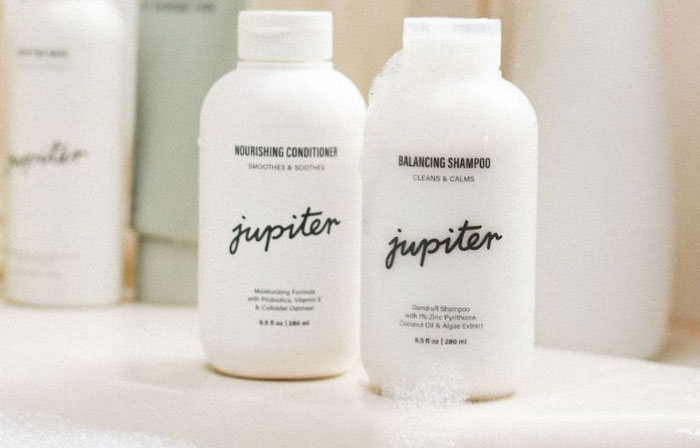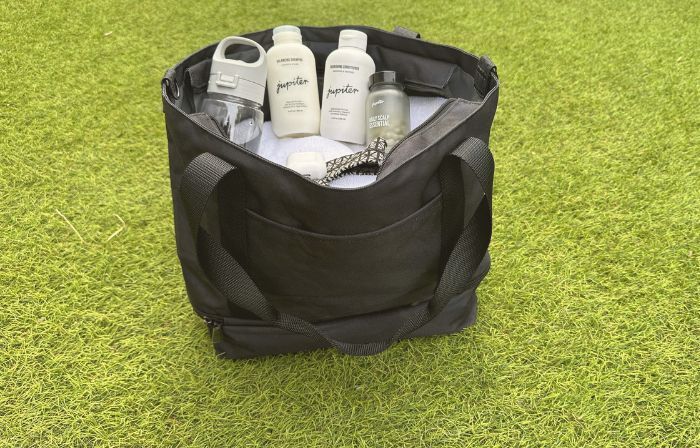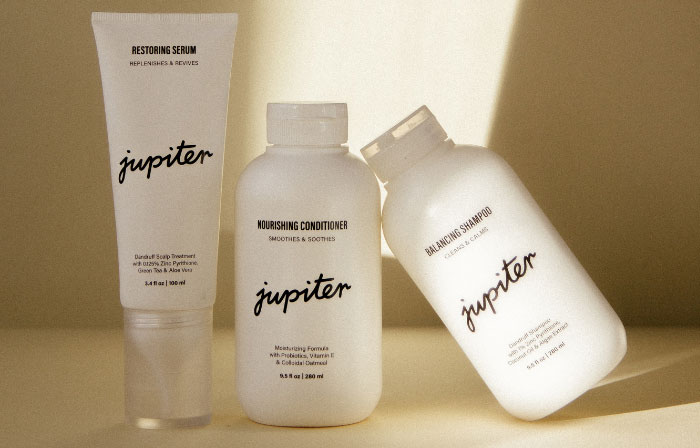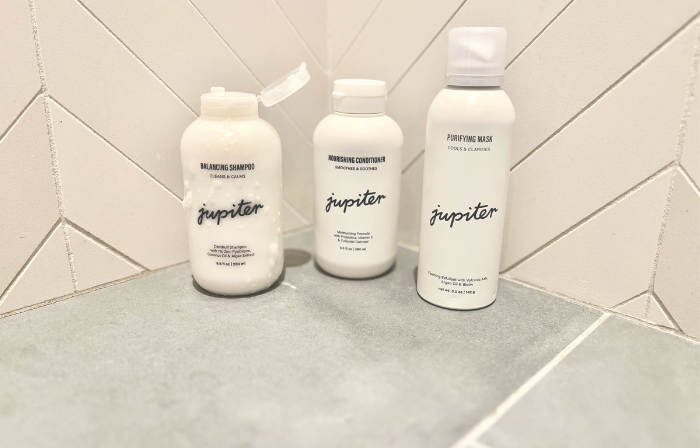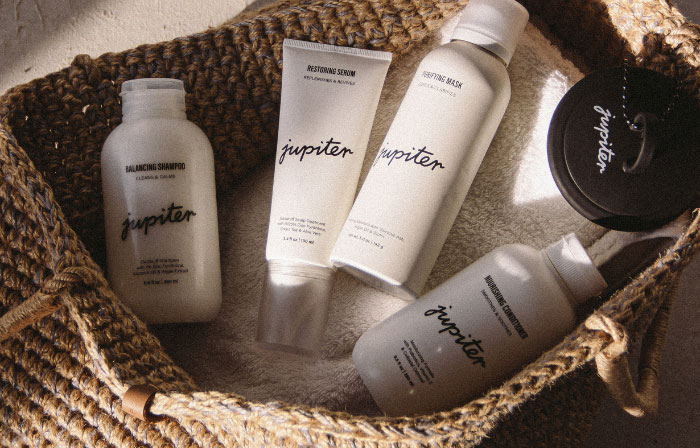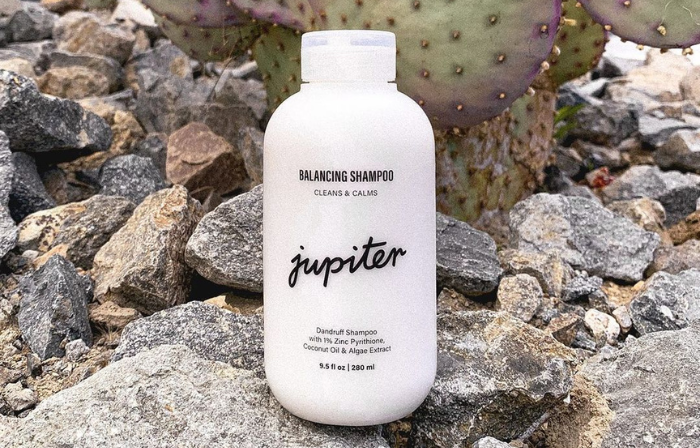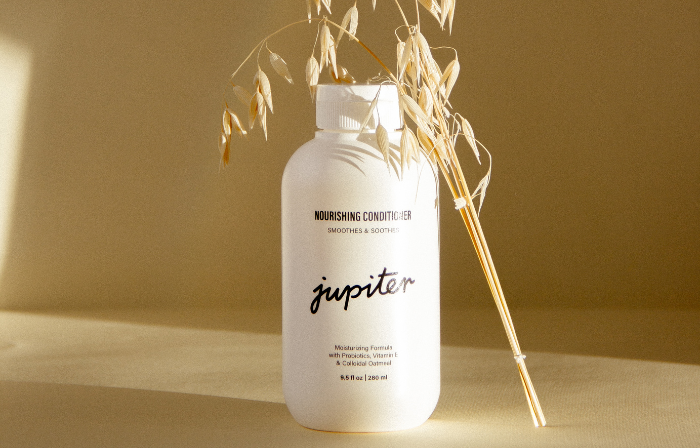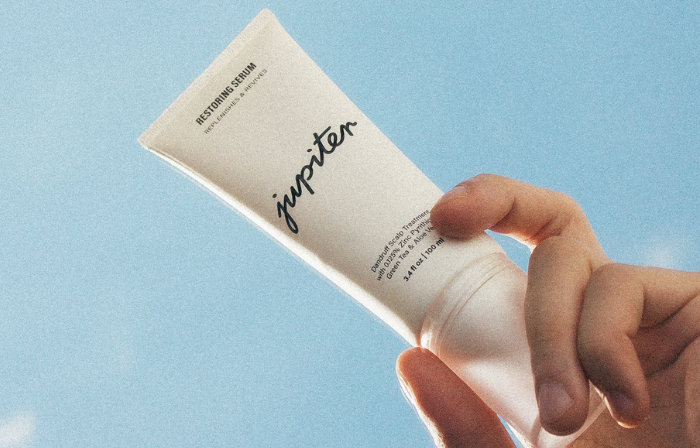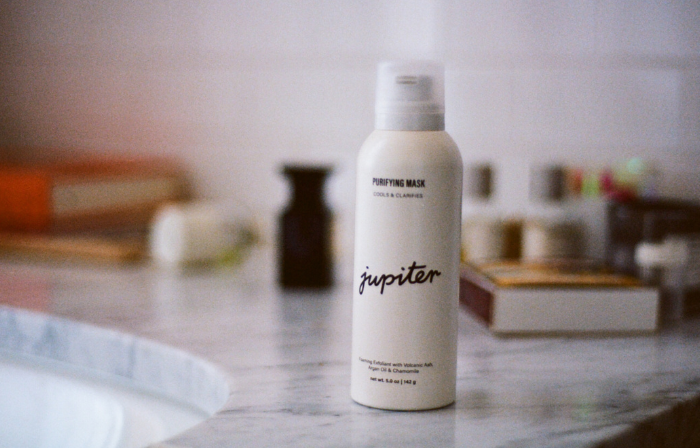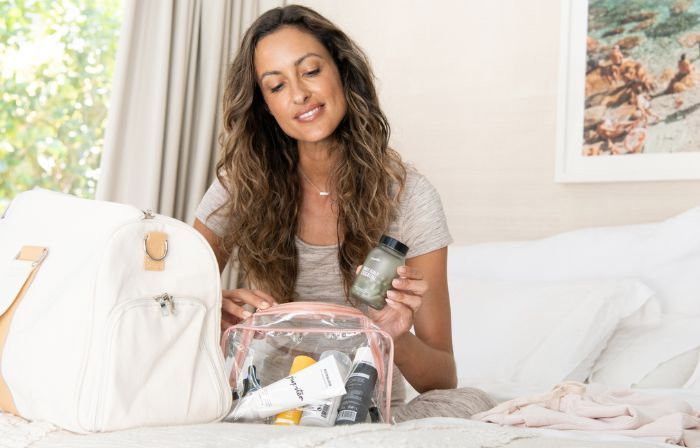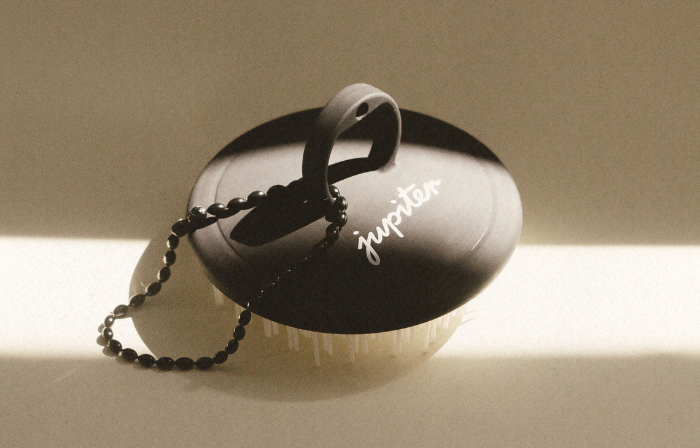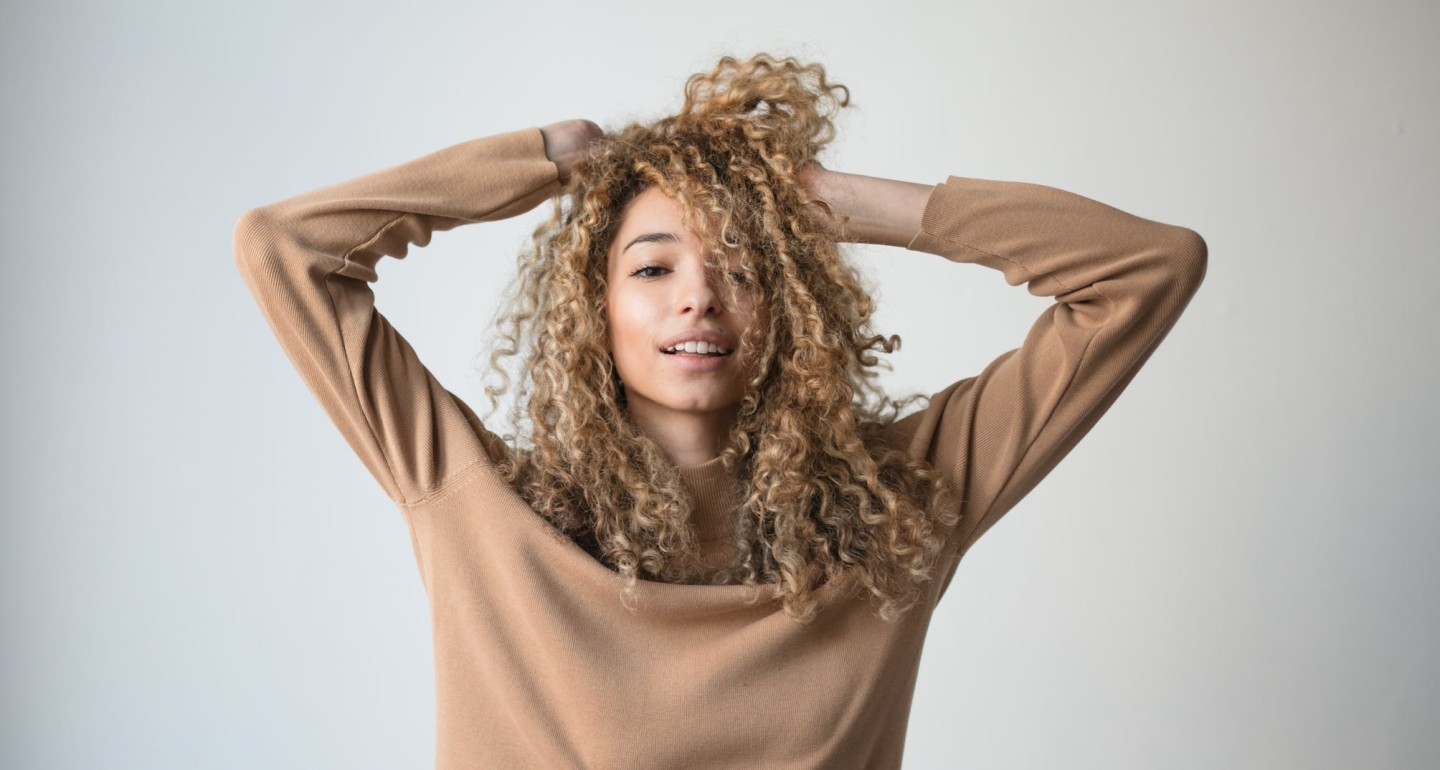🫶🏻 OUR 5% PLEDGE TO HER
#STRONGHERTHANYESTERDAY - WE DONATE 5% TO WOMEN-DRIVEN CHARITIES. LEARN MORE.
We think it’s about time that everyone gets real about dandruff.
The facts are, it’s normal, it’s usually unrelated to a major health or hygiene issue, and it’s treatable when you know what steps to take. So today, we’re going to demystify some of the causes of dandruff and talk about how you can find the right solution for your head.
Wait, What Exactly Is Dandruff?
Great question.
In short, dandruff is oily clusters of skin cells that clump together and flake away from your scalp. This can lead to an itchy scalp or uncomfortable irritation, especially as the oil becomes heavier and more built-up without proper cleansing.
While we know a lot about the conditions of dandruff and how to deal with it, the actual cause of the imbalance up top is still being researched. There are a few things we know for sure, though.
Dandruff is typically linked to an overgrowth of a yeast called Malassezia.
Malassezia lives all over our skin and is one of many, many microorganisms that call our bodies home. Generally, this is actually a good thing.
The microbiome of our skin depends upon the community of bacteria, fungi, and other microbes to keep its natural pH balance, regenerative process, and immune system in check.
When we see dandruff on our scalps, we usually see an excess of sebum, which is the oil our hair follicles naturally produce. Unfortunately, Malassezia knows sebum by another name: lunch.
When the scalp is oily, Malassezia overfeeds on sebum, growing at a more rapid rate and disrupting the natural order and balance of your scalp’s microbiome. In short, everything gets out of whack.
An overgrowth of Malassezia speeds up the regular process of shedding skin cells, leading those dead skin cells to clump together, which is when you start to see those larger, oily flakes collect.
What Type of Flakes Are You Dealing With?
It’s important to note that dandruff does not just describe general flaking.
There are a variety of reasons why you may be seeing flakes, and dandruff is only one of them. Let’s talk about some of the others, so you can determine whether you’re actually experiencing dandruff.
Dry Scalp
Not all flakes are dandruff. In the case of dry scalp, you may experience itching and flakiness without seeing the overproduction of sebum tied with dandruff.
These flakes tend to be lighter in color, less dense, and smaller. If the environment around you is arid or your hair is damaged from harsh chemical treatments or dyes, you may be experiencing a dry scalp.
Psoriasis
Tied to dandruff but still different, scalp psoriasis is a chronic skin disorder that leads to scaly patches. These can sometimes appear on the scalp in addition to the rest of the body. It’s more directly tied to the health of your immune system.
Eczema
Another condition that causes flaking is eczema. It tends to manifest in dry, red rashes, especially in areas where your body sweats, but it can lead to flaking and itchy skin when it appears on the scalp.
Seborrheic Dermatitis
Seborrheic Dermatitis or SD is basically an extreme case of dandruff, with the same fungal overgrowth widely considered to be the main cause. SD cases tend to be especially stubborn.
Everyone’s scalp is different and flaking and irritation can result from a variety of underlying conditions. Take our quiz to discover how you can treat your specific scalp needs.
Once you’re clear on what’s causing a flaky scalp, you can find the right tools to treat them. For example, if your flakes are related to a dry scalp rather than an oily scalp, you’d want to look for a moisturizing conditioner and a dandruff shampoo formulated with ingredients that not only stop flaking but that help restore your skin’s natural barrier.
Finding the Right Dandruff Treatment
Not sure where to start when finding the best dandruff treatments?
Let’s say you see flaking as a result of dandruff. While there is no ‘cure’ for dandruff in the traditional sense, there are plenty of tactics that can treat fungal overgrowth and bring balance back to your scalp’s microbiome.
In other words, we’ve figured out how to help reduce flaking, itchiness, and irritation. It all comes down to one ingredient: Zinc Pyrithione.
Zinc Pyrithione is an active ingredient with natural antifungal properties, making it an effective opponent to Malassezia. It essentially prevents the fungus from growing and puts a stop to the cycle that’s causing the oily build-up.
The best dandruff shampoo may contain Zinc Pyrithione (our anti-dandruff Balancing Shampoo does, in addition to a heavenly blend of natural ingredients like coconut oil, squalane, and vanilla), and that’s because it’s so effective at getting to the root of the dandruff problem.
Even better, it’s a prescription-grade medicated active ingredient that’s available over the counter, so it’s never been easier to put a stop to the flakes.
We know those wash and rinse days are sometimes few and far between, and if that’s the case for you, there are other options for treating dandruff that doesn’t rely on time and a lengthy shower routine.
Our Restoring Serum, for example, is a leave-in medicated product that acts as a booster between washes, relieving itch and giving your scalp a dose of Zinc Pyrithione to help keep flaking at bay. If your scalp is more oily or you wash your hair infrequently, it might be just the product you’re looking for.
Whatever the case may be, the formula matters. In addition to Zinc Pyrithione, many dandruff shampoos contain other ingredients that do more harm than good.
Enter the parabens — pause for dramatic effect.
Zinc Pyrithione is an active ingredient with natural antifungal properties, making it an effective opponent to Malassezia.
What Not To Use
Not all dandruff shampoos are made equally. While most contain antifungal ingredients like Zinc Pyrithione, selenium sulfide, and ketoconazole, many dandruff shampoos may also contain harsh ingredients that do more damage to your hair and scalp’s natural balance. That’s why it’s so important to read the back of your hair-care products’ labels carefully.
Consider this your list of what to avoid in the cosmetics aisle.
Parabens: This ingredient is usually included in shampoos to act as a preservative, extending the lifespan of the shampoo on your shelf.
Sulfates: First and foremost, the goal of all shampoos is to cleanse the scalp of dirt and oil. In order to do that, it needs to include a surfactant, which essentially pulls out and separates these oils. Sulfate is exactly the surfactant that shampoo companies have relied on for decades to do that job. The trouble is, it’s actually a little too effective at cleansing your scalp. It strips it of all the natural oils that keep your hair happy and healthy, resulting in a slew of other issues like dry scalp, itching, irritation,damaged hair, and you guessed it...dandruff.
Phthalates: A group of synthetic chemicals used for smoothing and softening, phthalates can be found everywhere, from your cleaning spray to your hand cream. Like BPA, phthalates are endocrine disruptors that disturb your body’s natural hormone levels. High levels of phthalates in personal care products has been linked to reproductive health issues.
When the risks are that high, isn’t it about time you prioritize placing the right ingredients on your scalp? We’d also suggest you look for products that are dye-free, free from synthetic fragrances, vegan, and cruelty-free.
Say Goodbye to the Flakes
Are you ready for the journey to begin?
It starts with exploring your own scalp and assessing what it specifically needs. Everyone is different, and true hair care is never one-size-fits-all. Opt for formulas that include the dandruff fighting active ingredient Zinc Pyrithione, along with natural ingredients that soothe and moisturize your scalp.
Check out Jupiter’s The “Gotta Get” Set which includes our Balancing Shampoo (made with the flake-fighting ZPT) and Nourishing Conditioner, formulated with ingredients like, coconut oil, squalane, colloidal oatmeal, and green tea extract.
Figure out what’s contributing to your flakes and irritation, do your research, select a product that effectively treats the issue, and steer clear of harmful chemicals that will give you a host of other issues.
Remember, dandruff is nothing to be ashamed of. You’ve already taken a great step forward by getting to the bottom of this article; the next step is to get started with effective and luxe hair and scalp care products. Learn more here.
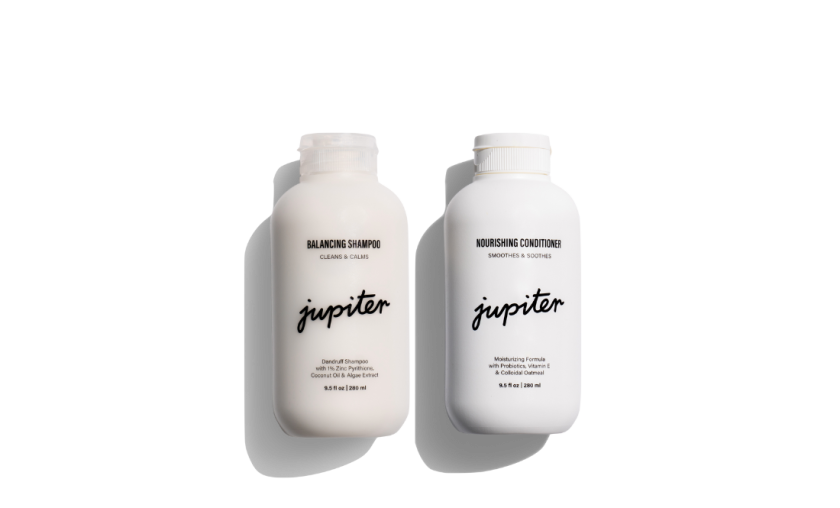
Our best-selling duo! The medicated Shampoo tends to your dandruff while the Conditioner’s combo of colloidal oatmeal and coconut oil moisturizes your scalp and hair. Safe for everyday use. Check out the Advanced Oil Control Trio if you flake on the regular and could use a bit more control.
Travelling? Check out our Weekender Capsules for on-the-go scalp care.
